By choosing the best car window tint for heat reduction, fleet managers and vehicle owners can cut down AC expenses, keep the interior protected, and improve ride comfort. Choosing the right window tint for heat reduction is crucial to reap its long-term benefits. Now, let’s explore the best car window tint options to make the right decision.
Why Heat Reduction Matters in Vehicles?
As we already mentioned, car window tint film not only adds comfort but also offers multiple other benefits. Using the best car window tint for heat reduction not only reduces costs but also improves customer satisfaction.
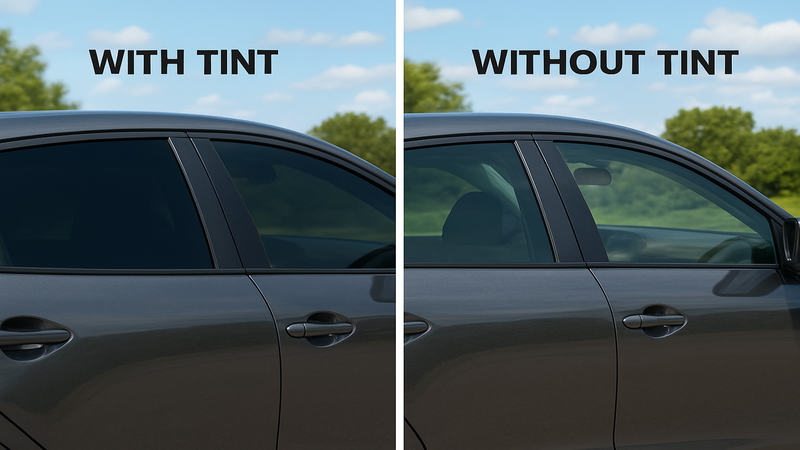
In the absence of heat rejection tints, drivers have to use AC, which increases fuel consumption and maintenance costs for fleets. It is observed that using AC in normal conditions increases fuel consumption by 8–10%, which subsequently increases cost.
Also, heat control window tint helps drivers stay focused by reducing heat fatigue and lowering the risk of accidents caused by glare.
Furthermore, the overheating of interior components, such as dashboards, upholstery, and electronics, affects their longevity.
Lastly, if the car’s interior is too hot, especially in vehicles for sale, passengers will feel dissatisfied. All these factors contribute to making heat-resistant window tint film the best choice and a worthwhile installation.
How Window Tints Reduce Heat?
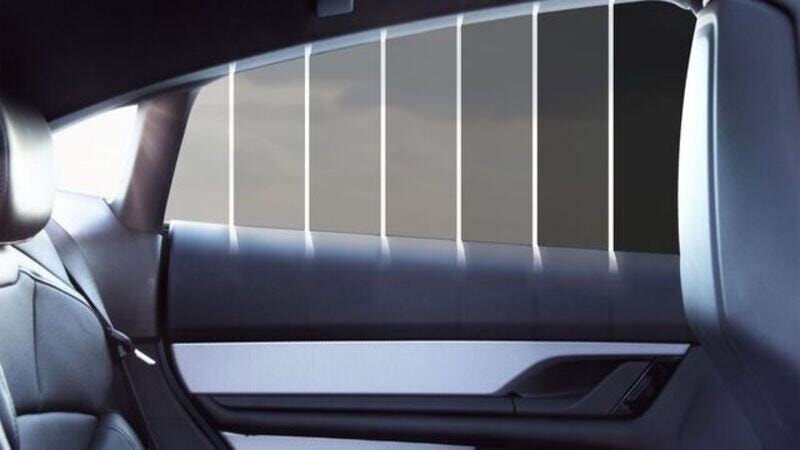
Now that you know the importance of the best car window film for heat reduction, it is essential to understand how it works. Note that not all tints work in the same way.
The infrared rays and ultraviolet radiation play a significant role in building heat, and the tints that prevent both the IR and UV rays from entering inside the cabin are considered the best window tint for heat reduction.
Some films absorb heat, while others prevent heat from penetrating the cabin by reflecting it. For example, dyed window films absorb heat. Whereas metallic or ceramic films reflect radiation to keep the cabin cooler.
The unit of measurement for performance is TSER (Total Solar Energy Rejection). The unit measures how much energy a film/tint can block.
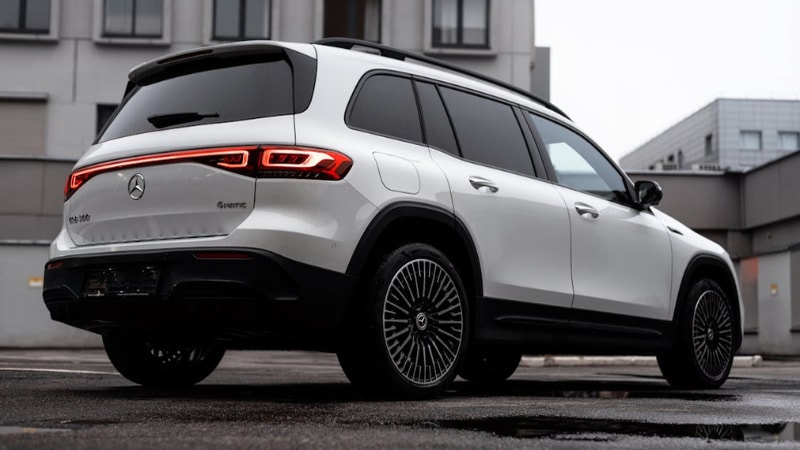
The higher the TSER is, the higher the comfort is, and the lower the A/C cost is. It is important to note that not all dark colors deliver the same results. A heat control window tint that is lighter in shade may offer better performance than dark films.
Types of Car Window Tints for Heat Reduction
There are different types of window tints. You need to choose the one that fits your requirements, stays within your budget, and suits your long-term goals.
1. Ceramic Window Tints (Best Overall)
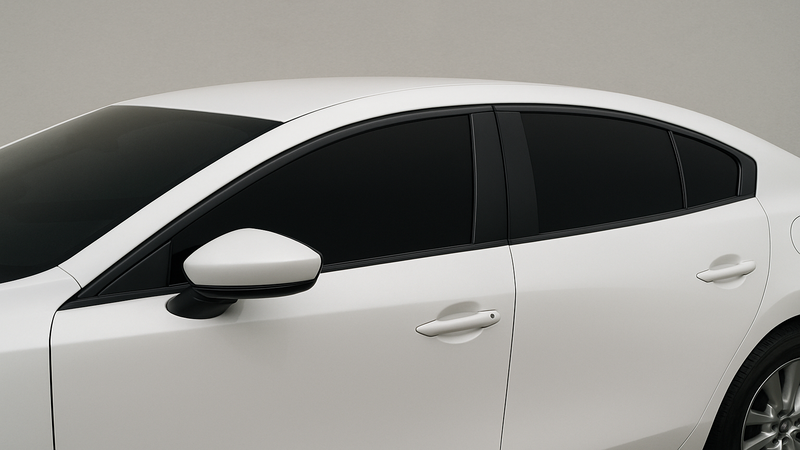
The tints that are regarded as the best car window tints for heat reduction are the ceramic window tints. These tinted windows can block IR and harmful UV rays up to 99% thus offering superior heat rejection. Also, this window tint is durable and unlikely to fade over time.
Additionally, this tint is signal-friendly, meaning that it does not interfere with GPS, radio, or phone signals. The cost of this tint is higher, but the ROI it offers is also higher.
2. Carbon Window Tints
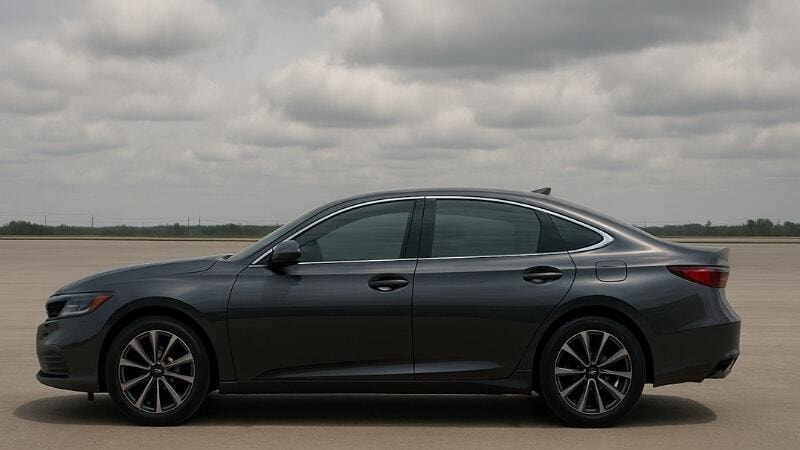
Compared with ceramic tint, carbon window tint is also a good option. These tinted window blocks heat by up to 40%–60%.
This matte finish tint is an ideal choice for fleets operating in hot climate regions, as it offers optimal performance at a cost-effective price. This tint also does not interfere with the signals.
3. Metalized Window Tints
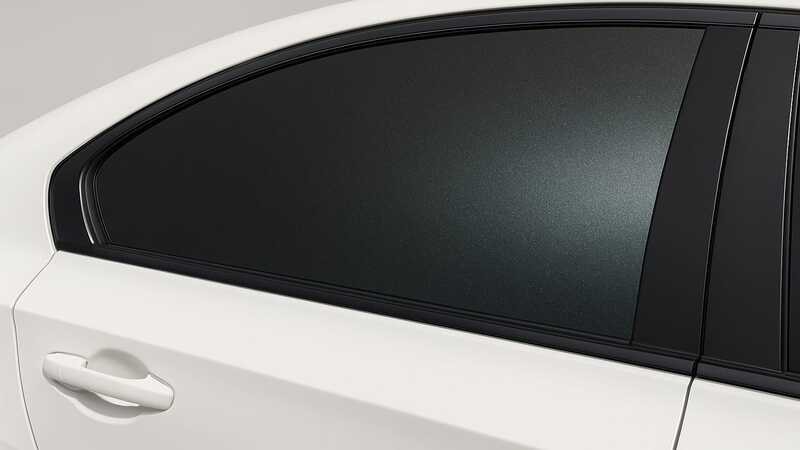
These tints offer strong heat reflection properties. They provide better heat control performance; however, the metallic particles of this tint may interfere with the signals.
4. Dyed Window Tints
If you are searching for affordable options to reduce heat consumption, then the dyed window tints are the perfect option for you. Dyed tinted windows absorb heat, but not as much as the ceramic and carbon tints.
Furthermore, these tints are likely to fade over time, thus contributing to higher replacement costs.
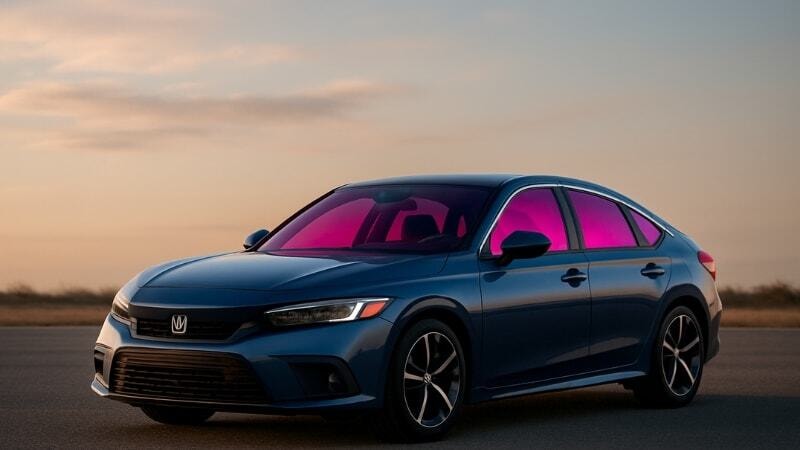
5. Hybrid Tints
These tints, as the name indicates, combine dyed and metallic layers. The hybrid tint offers moderate heat reduction and lasts longer than the dyed tints. However, they may cause signal interference.
6. Infrared-Reflective (IR) Tints
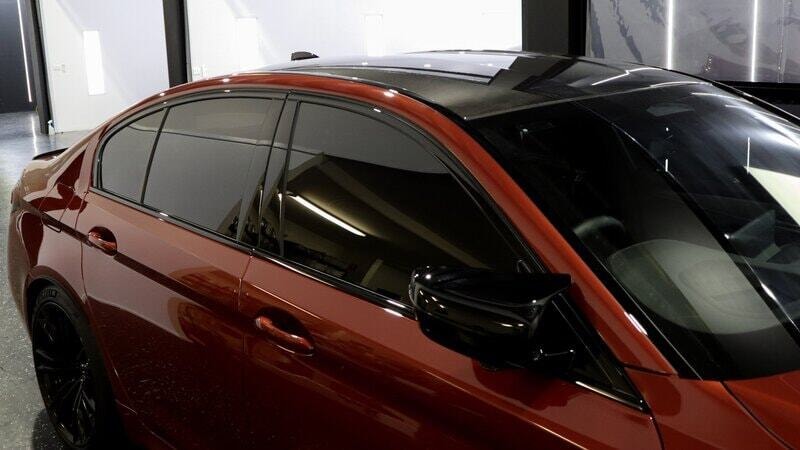
The last type of film is the infrared-reflective tint, designed to prevent the penetration of IR rays inside the cabin. These tints are ideal in regions where the law prohibits the use of dark shades.
Comparing Tint Types: Cost vs. Performance

A side-by-side comparison of different types of high heat-rejection window tint is given in the table below. The table will help fleet managers and car owners to choose the option that is suitable for their requirements:
| Tint Type | Heat Rejection | Signal Interference | Durability | Cost Range | Best For |
|---|---|---|---|---|---|
| Ceramic Window Tints | Highest (80–99%) | None | 10 years + | Highest | Premium fleets & dealerships that need maximum ROI |
| Carbon Window Tints | Excellent (40–60%) | None | 7-10 years | Moderate | Fleet managers operating in hot regions |
| Metalized Window Tints | Strong (60–75%) | Possible | 8-10 Years | Moderate | Those who value durability |
| Dyed Window Tints | Limited (20–35%) | 2-5 Years | None | Lowest | Those having a low budget |
| Hybrid Tints | Moderate (35 - 55%) | 5-7 years | Mild | Moderate - Low | Those looking for moderate cost and performance tints |
| Infrared-Reflective (IR) Tints | High (50–80%) | 8–10 years | None | High | Areas where laws don’t allow dark tints |
Common Mistakes to Avoid
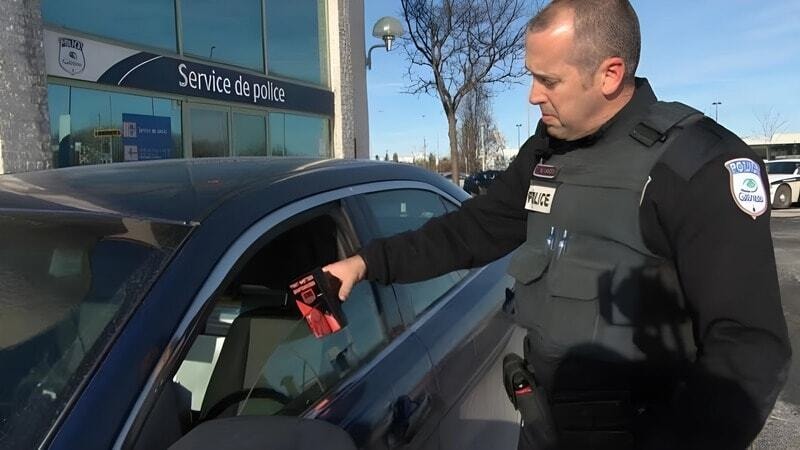
Making mistakes while choosing the car window tints is common. These mistakes reduce the value of films and lead to higher costs. All the common mistakes people make while buying tints are mentioned below. Read them carefully to take proper measures to avoid these mistakes:
- Choosing darkest tint: Vehicle owners think that the darker the shade, the less the penetration of heat inside the cabin is. This is totally wrong, as a high-quality light-shade heat control window tint, like the ceramic window tint, is better than darker dyed tints.
- Ignoring local tint laws: People don’t consider the local tint laws and then face fines. Make sure to check the rules on visible light transmission (VLT) to choose a legal tint.
- Preferring the cheapest option: Everyone loves to save money, but in the case of tints, choosing the cheaper options results in frequent replacement. Thus, it is crucial to invest in a high-quality tint to save money in the long run.
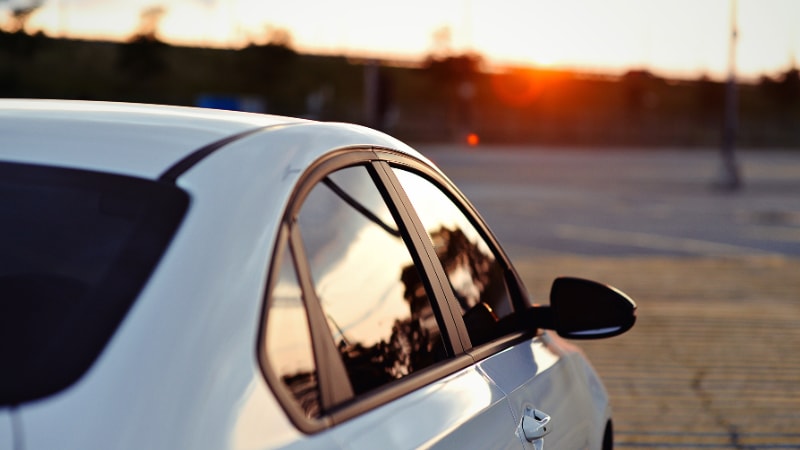
- Ignoring the signal interference: Fleet managers must consider the signal interference of any tint before buying it. Metalised tints block GPS, radio, or mobile signals; thus, fleets that rely on navigation systems must not invest in such tints.
- Ignoring ROI: Fleet managers and dealerships should always choose options that offer maximum return on investment. The tint that saves fuel costs, protects interiors, lasts longer, and offers high comfort should be preferred.
Legal Considerations for Window Tinting
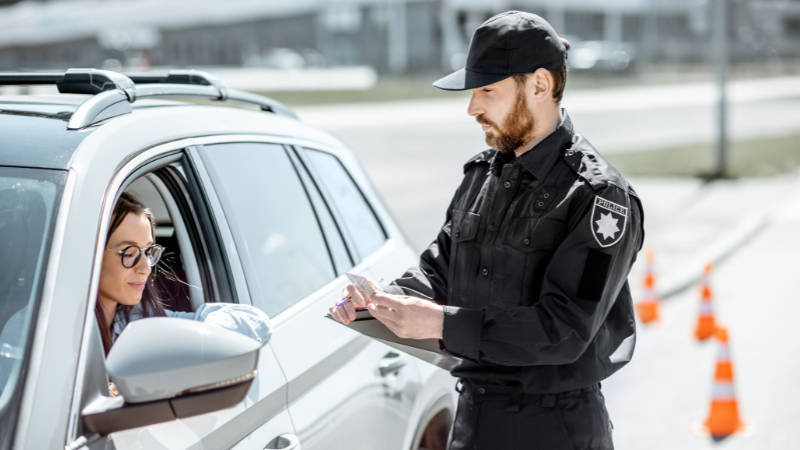
Each country or state has different rules regarding how much heat or light can pass through the windows. Colorado window tint laws are different from those in Maryland. Thus, to choose the best window tint for heat reduction, make sure to know the laws in your region.
Some states require the front window to pass 65-75% VLT, whereas rear and side windows have flexibility, but limits still vary. Some areas have stricter regulations for windshields and allow only a small tinted strip on the top.
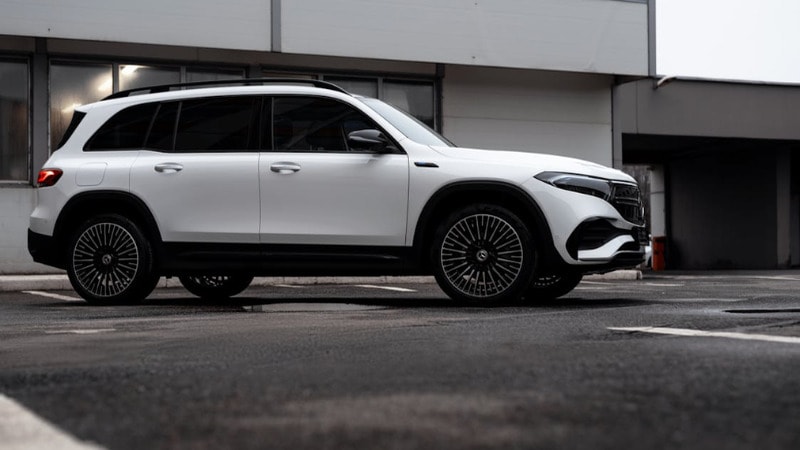
Businesses, including dealerships, auto shops, and fleet operators, must follow the laws to avoid hefty fines, save their reputation, and avoid forceful removal. As a fleet manager, always ensure to check the local laws before installing the tint.
Many manufacturers offer tints that strike a balance between high heat rejection and legal transparency levels, enabling optimal performance while complying with regulations. In case you are not able to verify laws on your own, consult a professional and protect your business, customer, and reputation.
FAQs
Q1. What is the best tint to block heat?
The best high heat rejection window tint to block heat is the ceramic or carbon window tint. The tints can block up to 99% of infrared rays and ultraviolet radiation.
And these long-lasting window tints can reduce AC costs, prevent overheating of interior components, and help drivers stay focused.
Q2. Does window tinting actually reduce heat?
Yes, window tinting reduces heat by preventing the infrared rays and ultraviolet rays from entering the cabin. The UV and IR rays build up heat; thus, by blocking them, these window films can reduce the cabin’s temperature by around 60%.
Q3. Does a 35% tint help with heat?
Yes, if it’s a ceramic or carbon window tint, that 35% tint can keep your car cooler significantly. The 35% tint allows fleet managers and vehicle owners to comply with the laws while also keeping their vehicles cool.
Q4. Are darker tints always better for heat reduction?
No, darker tints are not necessarily better for heat reduction. Heat control depends on the tint’s quality, not the color. For example, a dark dyed tint provides less heat reduction compared to a lighter shade ceramic tint.
Conclusion
Car window tint films offer more than comfort; they deliver long-term savings by reducing fuel consumption, minimizing replacement costs, and extending vehicle lifespan. For fleet managers, ceramic tints provide maximum performance and ROI, carbon tints balance cost and efficiency, and dyed tints suit tight budgets.
Choosing high-quality films from reliable manufacturers ensures lasting heat reduction, improved efficiency, and stronger returns over time.
Protect Your Fleet’s Cabin From Heat – Contact Carlike Today!
With 15+ years of experience, Carlike Film is the top manufacturer of car films and window film tints. We offer multiple window tint films, fast delivery, and low MOQ. Combined with our high-quality products and 24/7 customer support, our experienced staff is here to offer you the best window tint solution.
Contact us now to get a quote tailored to your bulk requirements.



